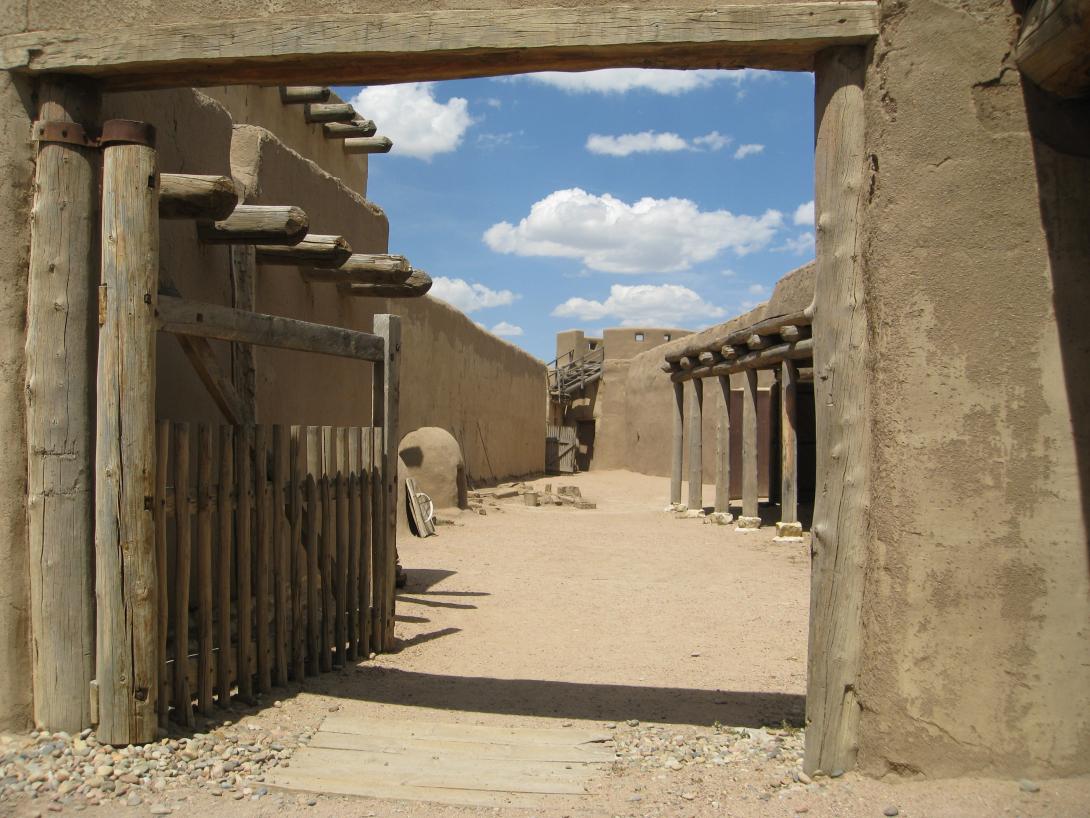William Bent
Full Article
William Bent (1809–69) played a pivotal role in the early development of Colorado. He initially came to the area as a fur trapper but became a liaison between whites and Native Americans via his trading fort on the Arkansas River near present-day La Junta. The Santa Fé Trail was the strategic location for his trading post, which supplied goods to Mexicans, Native Americans, and white Americans. He was a friend of the Cheyenne and was a key player in relations between them and the US government.
William Bent was born May 23, 1809, in St. Louis, Missouri, as one of eleven children. In the 1820s, at the age of fifteen, he and his brother Charles traveled west to trap beaver along the Arkansas River. During these early years, they hauled goods between St. Louis and Santa Fé along the Santa Fé Trail. When William was seventeen, the brothers moved their operation to an area around the North Platte River. William, Charles, and their business partner, Ceran St. Vrain, established Bent’s Fort in 1833, after they had managed to take away the majority of the fur trade from Taos. Through his dealings with various ethnic groups in the region, Bent learned French, several Native languages, and sign language, making him an important intermediary between Native Americans and whites.
Bent’s Fort employed approximately 100 people and functioned as a trading post as well as an outfitter for trappers, a safe resting place for travelers, a watch post for the US Army, and the center of the bison hide trade. Most of his dealings were with the Cheyenne. In 1830, he saved two Cheyenne from a group of wandering Comanche. Chief Yellow Wolf, the Cheyenne chief, was extremely grateful and eventually became a trading partner of Bent’s who would often set up camp just outside the fort. It is during this time that Bent became a liaison for the Native Americans. In 1835 he married Owl Woman, daughter of the Cheyenne White Thunder. She taught Bent the Cheyenne language and bore him four children: Robert, Mary, George, and Julia. Owl Woman died in 1847 during childbirth, and after her death, per Cheyenne custom, Bent took in her two sisters, Island and Yellow Woman. He and Yellow Woman had one son, Charley. Yellow Woman eventually went back to her tribe and Island became mother to all of Bent’s children.
Due to its prime location on the border of the United States and Mexico, Bent’s Fort was used as a staging area by Colonel Stephen Watts Kearney during the invasion of Mexico in 1846. Afterwards, William Bent tried to sell his fort to the US Army, but it is rumored that their offer was so low he decided to destroy it instead. Another possibility for its demise was a cholera epidemic in 1849. It was burned to the ground that same year. In 1853, Bent moved thirty miles east and built Bent’s New Fort overlooking the Arkansas River at a place known as Big Timbers. Unfortunately, trade dwindled in the 1850s, so Bent became a mediator and representative for the Native Americans. He tried relentlessly to get them better treatment from the federal government. From 1859–60 he served as Indian agent for the Upper Arkansas Indian Agency, which was stationed for a short time at Bent’s New Fort.
The Sand Creek Massacre of 1864, in which more than 150 peaceful Cheyenne and Arapaho Indians were slaughtered by US troops, was devastating to William Bent. His first three wives were Cheyenne, and all of his children were half Cheyenne. During the 1864 massacre, his children George, Charley, and Julia were in the Cheyenne camp. Colonel John Chivington coerced Bent’s son, Robert, to guide him and his troops to the camp. Captain Silas Soule rescued Charley; George and Julia escaped separately, with Julia being saved by her future husband. At Chivington’s trial, Robert and William Bent both testified against Chivington and condemned his actions. William Bent, on his own behalf, described his efforts to make peace between the whites and Native Americans. Prior to the massacre, Bent had informed Chivington that the Cheyenne leaders Black Kettle and White Antelope wanted to live in peace, but Chivington had dismissed Bent’s information.
As a result of the massacre, Bent’s sons, Charley and George, joined the Dog Soldiers and led war parties of Cheyenne and Lakota against settlers of eastern Colorado. Charley would eventually die from a fever caused by a gunshot wound in 1868. George became an interpreter for Edward Wynkoop when he became an Indian Agent. Julia had three children with the man who rescued her from the Sand Creek Massacre. William Bent’s daughter Mary died in 1878. Earlier she had claimed that Charley had visited the Bent home one night to murder their father. It was sheer luck Bent was not at home.
William Bent married his fourth wife, Adeline Harvey, a white woman, in 1867. The marriage was short lived due to his death in 1869 from pneumonia. He is buried in the Las Animas Cemetery in Las Animas, Colorado. His legacy is preserved in the reconstructed Bent’s Fort, now a tourist attraction, and in Bent County, which bears his name.















